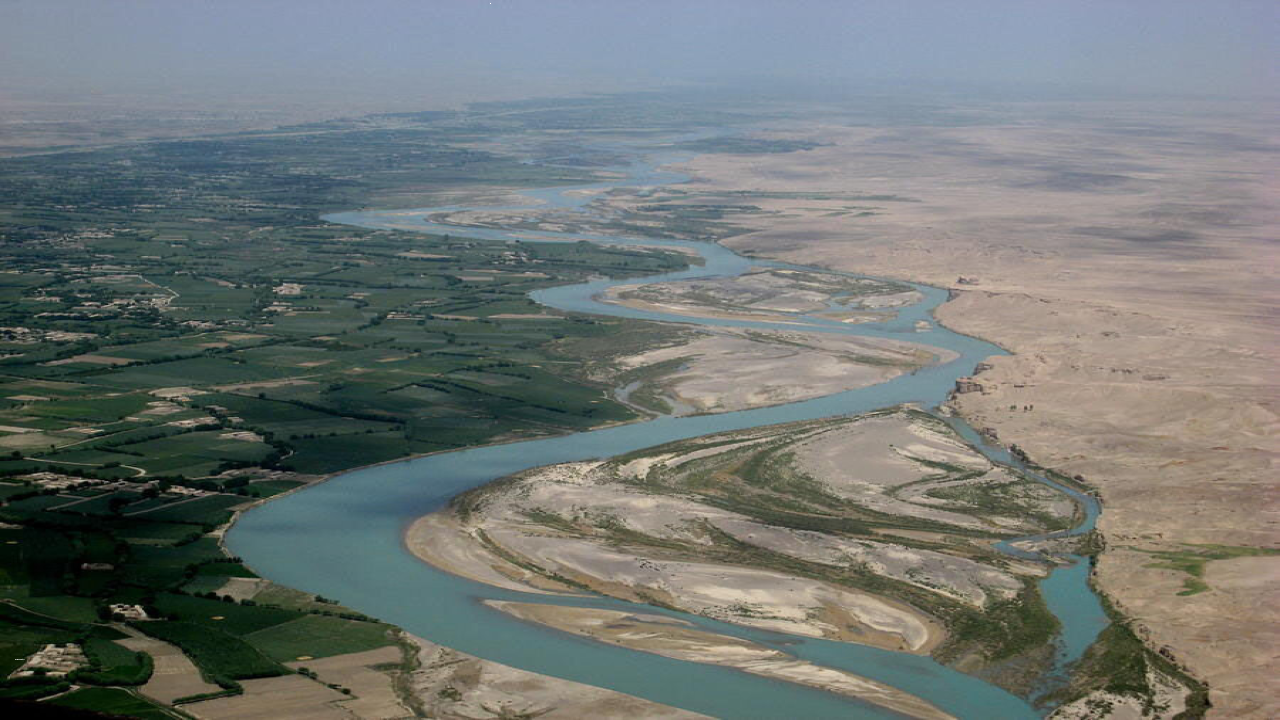- Iran and Afghanistan have been at odds for a long time over the distribution of water from the Helmand River.
- In the recent past, there have been violent clashes at the two countries’ border.

Concerning the Helmand River
- The Helmand River is Afghanistan’s longest river, stretching around 1,150 kilometres (715 miles).
- It originates in the western Hindu Kush mountain range near Kabul.
- The river travels south-west across desert terrain before draining into Lake Hamun, which spans the Afghanistan-Iran border.
- Lake Hamun, which is supplied by the Helmand River, is Iran’s largest freshwater lake.
- The Helmand River is an important source of water for both Afghanistan and Iran, sustaining agriculture, livelihoods, and ecosystems in the region.
Row across the Helmand River and Lake Hamun.
- Afghanistan’s longest river: The Helmand River, which originates near Kabul and flows through arid areas, is extremely important to Afghanistan.
- Lake Hamun, located on the Afghanistan-Iran border, is Iran’s largest freshwater lake and has historically been supported by the Helmand River.
- Drought has caused a severe drop in water levels and has largely dried up, which has been ascribed to reasons such as drought and the development of dams and water management equipment.
- Lake Hamun is economically significant because it supports agricultural activities, livelihoods, and economic sectors in the surrounding areas.
Conflicts between Iran and Afghanistan (Taliban)
- The Helmand River Treaty of 1973 has been tainted: The 1973 agreement between Iran and Afghanistan to govern river water allocation has not been fully approved or adequately implemented.
- Iran accuses Afghanistan of breaking its water rights: Iran has consistently accused Afghanistan of abusing its water rights, claiming that it receives far less water than was agreed upon in the 1973 deal.
- Afghanistan cites climatic variables for decreased water flow: Afghanistan has denied Iran’s charges, citing meteorological factors such as decreased rainfall and river water volume as the key causes of the current situation.
- Concerns over Afghanistan’s dam and irrigation projects: Tehran is concerned about Afghanistan’s plans to build dams, reservoirs, and irrigation systems along the Helmand River, fearing that these projects may reduce water flow into Iran.
A recent summary of Tehran-Taliban relations
- Previously established relations between Iran and the Taliban: Prior to the Taliban’s conquest of Kabul, Iran maintained diplomatic connections with the group, owing to a common antipathy to US forces in the region.
- The Taliban regime is not officially recognised: Despite its refusal to openly recognise the Taliban regime, Iran has collaborated with the Afghan ruling group to preserve its interests, particularly the preservation of Lake Hamun.
- Border confrontations since the Taliban’s takeover: There have been numerous events and fights along the Iran-Afghanistan border since the Taliban’s takeover.
Why is the Taliban so enraged this time?
- The Taliban’s interest in agriculture: The Taliban prioritises agricultural development, which determines how they manage and distribute water.
- Tehran’s sudden interest in Sistan-Baluchistan following protests: Following widespread uprisings, especially in Sistan-Baluchistan, Iran’s government has focused its focus on the province due to its disadvantage and dependency on Lake Hamun’s water resources.
Significant roadblocks in the resolution
- Lack of interest: Both Iran and the Taliban are uninterested in resolving the region’s mismanagement of water resources and environmental concerns.
- Short-term emphasis on internal issues: Instead of aggressively settling the water problem, both Iran and the Taliban prioritise short-term solutions and focus on domestic matters.
Sistan-Baluchistan’s current situation
- Growing public outrage: Water scarcity and other economic and social issues are fueling public anger and dissatisfaction in the eastern Iranian region of Sistan-Baluchistan.
- Water scarcity and other issues: Sistan-Baluchistan suffers from significant water scarcity, which contributes to economic and social difficulties in one of Iran’s poorest regions.
- Creating an investigation commission: In order to handle the recent border confrontation, Iran and Afghanistan have decided to form a commission of inquiry to look into the incident.
Source: https://theprint.in/diplomacy/iran-vs-afghanistan-why-helmand-water-sharing-dispute-is-boiling-over-decades-after-treaty/1600694/
